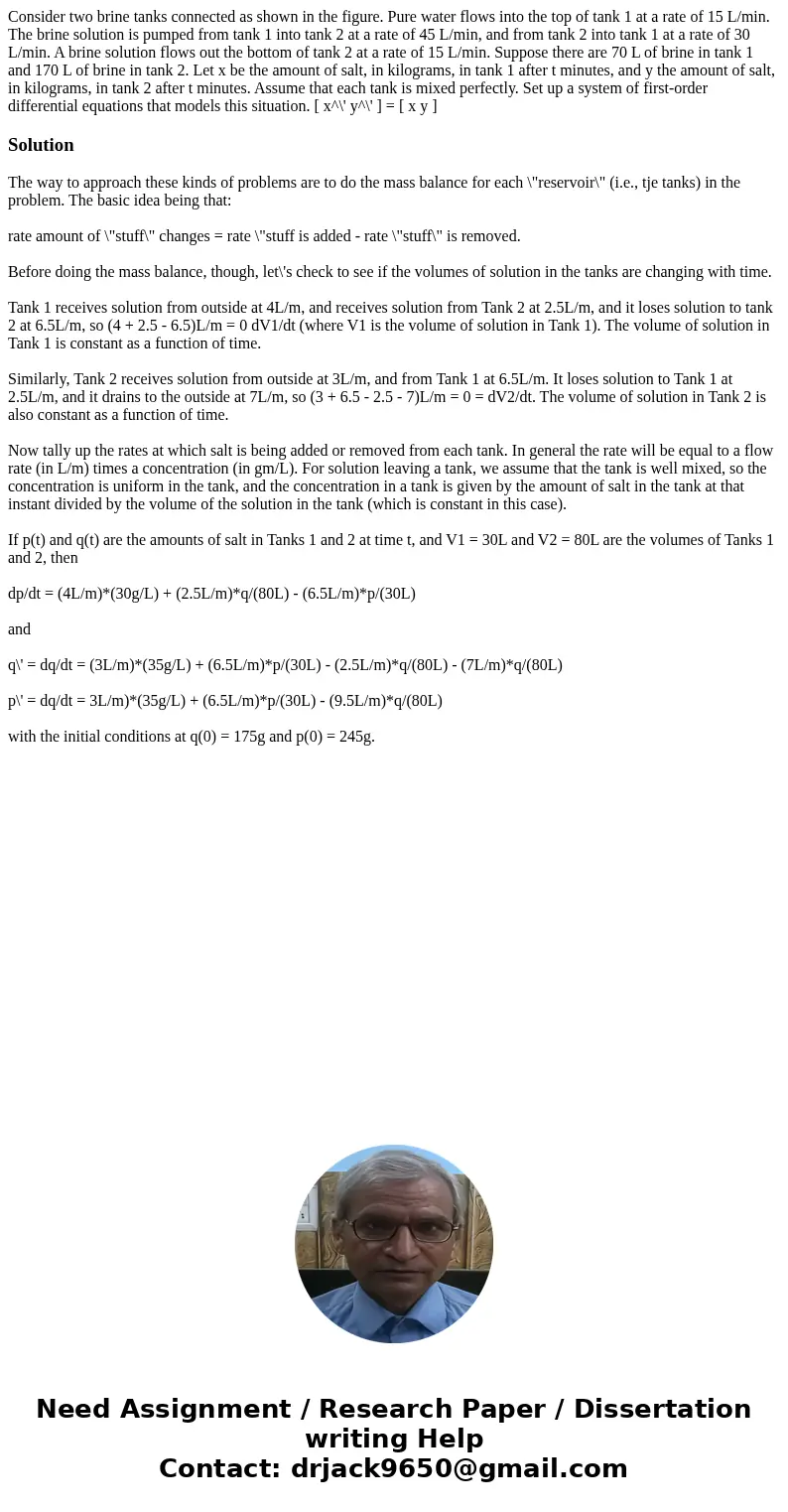Consider two brine tanks connected as shown in the figure Pu
Solution
The way to approach these kinds of problems are to do the mass balance for each \"reservoir\" (i.e., tje tanks) in the problem. The basic idea being that:
rate amount of \"stuff\" changes = rate \"stuff is added - rate \"stuff\" is removed.
Before doing the mass balance, though, let\'s check to see if the volumes of solution in the tanks are changing with time.
Tank 1 receives solution from outside at 4L/m, and receives solution from Tank 2 at 2.5L/m, and it loses solution to tank 2 at 6.5L/m, so (4 + 2.5 - 6.5)L/m = 0 dV1/dt (where V1 is the volume of solution in Tank 1). The volume of solution in Tank 1 is constant as a function of time.
Similarly, Tank 2 receives solution from outside at 3L/m, and from Tank 1 at 6.5L/m. It loses solution to Tank 1 at 2.5L/m, and it drains to the outside at 7L/m, so (3 + 6.5 - 2.5 - 7)L/m = 0 = dV2/dt. The volume of solution in Tank 2 is also constant as a function of time.
Now tally up the rates at which salt is being added or removed from each tank. In general the rate will be equal to a flow rate (in L/m) times a concentration (in gm/L). For solution leaving a tank, we assume that the tank is well mixed, so the concentration is uniform in the tank, and the concentration in a tank is given by the amount of salt in the tank at that instant divided by the volume of the solution in the tank (which is constant in this case).
If p(t) and q(t) are the amounts of salt in Tanks 1 and 2 at time t, and V1 = 30L and V2 = 80L are the volumes of Tanks 1 and 2, then
dp/dt = (4L/m)*(30g/L) + (2.5L/m)*q/(80L) - (6.5L/m)*p/(30L)
and
q\' = dq/dt = (3L/m)*(35g/L) + (6.5L/m)*p/(30L) - (2.5L/m)*q/(80L) - (7L/m)*q/(80L)
p\' = dq/dt = 3L/m)*(35g/L) + (6.5L/m)*p/(30L) - (9.5L/m)*q/(80L)
with the initial conditions at q(0) = 175g and p(0) = 245g.

 Homework Sourse
Homework Sourse